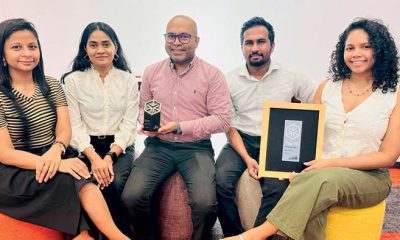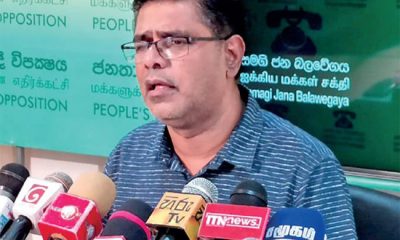Sat Mag
From ritual to performance: The sociology of Kohomba Kankariya

By Uditha Devapriya
Kohomba Kankariya: The Sociology of a Kandyan Ritual
, by Sarath Amunugama
Vijitha Yapa, 2021, 204 pages, Rs. 2,000
One of the oldest rituals in Sinhala culture, the Kohomba Kankariya is also the biggest. It is certainly the most expensive, requiring tremendous reserves of energy, effort, enthusiasm, and initiative. Bringing together a galaxy of deities and demons, the Kankariya has, since the late 19th century, made a slow transition from healing ritual to secular performance. Today, more than its low country counterpart, the Gammaduwa, it exists as an object of spectacle. Yet this transformation has not taken place at the cost of its cultural origins. What Sarath Amunugama has done in this book is to present a comprehensive account of the ceremony, probing into its origins, outlining its framework, and charting its influences and offshoots.
Dr Amunugama’s aim in the present work is to explore the sociology of Sinhala ritual. In doing so, he offers us an insight into the syncretism of Sinhala culture. Having described the ways in which that culture accommodated European colonialism, he provides the framework from which the Kankariya evolved into an object of spectacle. Though much slimmer than his previous work, the book delves into how a ritual conceived by an agrarian society to usher in prosperity could transform into an art form patronised by cosmopolitan elites.
The book is divided into five sections. In the first, the author describes the Kankariya, probes into its possible origins and myths, and comes up with a framework governing the totality of Sinhala healing rituals, including the Gammaduwa. In the second, he ventures into a study of ves natum, its genesis as a cosmic drama, its separation from the ritual in the age of colonial modernity and mechanical reproduction, and its later patronage by the 43 Group. He outlines the biographies of four key figures associated with these transformations in the fourth section, while in the fifth he presents a series of photographs, including those of a Kankariya that the author held in 2015 as well as of past Kankariya dancers and drummers.
What animates these forays is the author’s standing: what he has, which most other scholars on the Kankariya lacked, is not just agency in terms of capital, but access to families that have been holding the ceremony for decades, if not centuries.
One of the many concerns Dr Amunugama tackles in his book is the lack of research into Kandyan healing ceremonies. By comparison, much has been written on low country rituals, especially the Gammaduwa. Along the southern coastline, these rituals came to absorb facets of European colonialism, projecting what anthropologists like Bruce Kapferer diagnose as an aggressive streak inherent in Sinhala Buddhist culture. This is, of course, a generalisation too crass to consider seriously, but as Dr Amunugama notes, the near-absence of anthropological studies of Kandyan rituals has led to foreign scholars propagating totalising claims about that culture. Though they share a common framework, he informs us, Kandyan healing rituals are “more measured, non-aggressive, and processional” than their low country counterparts. Any study of Sinhala ritual should, therefore, take into account the “countervailing politesse of the Kankariya.” Observation must of necessity precede theorising here.
Dr Amunugama divides the Kankariya and Sinhala ritual in general into “preliminary steps” and “core rituals.” The object of the preliminary steps is three-fold: to prepare the backdrop for the ceremony, welcome gods and demons into our world, and initiate the dancers and drummers into theirs. Having set the stage, these eventually lead to interactions between the two worlds through the core rituals: the Katha Paha, Aile Yadina, Kuveni Asna (Kankariya) and Pattini Kolmura (Gammaduwa), Guruge Malawa, Kolmura Kavi and Palavela Danaya (Kankariya), Pantis Kolmura (Gammaduwa), Dunu Malappuwa, and Muva Mal Videema, all of which pit one world against the other, yet also bring them together, culminating in a grand communal feasting of a boar’s carcass; the latter, as the author wryly speculates, rebels against the popular view of Kandyan kings, nobles, and locals as vegetarians.
The lines of inquiry these open us to are many, but Dr Amunugama chooses to dwell on four themes. The first and second are to do with the core ritual: the “divi dos” ailment at the heart of the Panduwasdeva story the ceremony revolves around, and the agency of the female archetype that ceremony centres on. As with the Gammaduwa, the Kankariya is filled with sexual symbols that immediately summon associations with fertility rites: after all, the ritual begins with the boiling of milk (procreation) and ends with the shooting of a banana flower (penetration), with the dousing of a flambeau (castration) to boot.
Yet what fascinate one here aren’t so much the associations themselves as the role they assign to the female figure at the epicentre of the ritual. The Panduwasdeva story, Dr Amunugama notes, underscores the theme of betrayal. The arc of that theme bends towards no less than the founding of the country: Vijaya’s betrayal of Kuveni, which, so to speak, condemns him to failure in producing an heir. What the ritual seeks to do, in other words, is redeem an entire community from the betrayals of their ancestors. This is also what underpins the Pattini myth that undergirds many low country rituals, especially the Gammaduwa.
Far more interesting and intriguing than this, however, is the author’s exploration of the role of Brahmins in the Kankariya. Here we come to one of several distinctions that separate that Kankariya from the Gammaduwa. In the low country, encounters with communities beyond geographic borders facilitated the assimilation of certain caste groups after the 13th century. In the Kandyan kingdom, such encounters did not immediately lead to comparable processes: in fact, as the rebellions instigated by the radala aristocracy confirm, there was much hostility towards men of South Indian extraction holding the crown.
Roughly the same attitude prevailed among locals towards Brahmins: historians have noted how Buddhist monks resented their habit of smearing ash on their foreheads. It is fascinating, if not coincidental, that these attitudes are reflected in the structure of the Kankariya itself, and that they echo a popular though unflattering view of Brahmins propagated by litterateur-monks in the Kotte era. Dr Amunugama’s attempts at reconciling this with other accounts of relations between the Nayakkar kings and their radala subordinates, in particular Gananath Obeyesekere’s, make for insightful reading here.
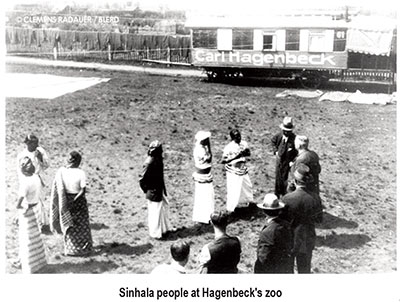 The fourth theme occupies the rest of the book and is crucial to our understanding of Sinhala ritual: the relationship between these ceremonies and traditional dance forms. The dance form associated with the Kankariya, of course, is ves natum. The commonality linking Afro-Asian healing rituals to each other is the separation of these dance forms from their ritual origins, or the secularisation of those dance forms, under conditions of colonialism. Ves natum was by no means an exception to this rule: as the economic base sustaining the Kankariya collapsed due to the absence of royal patronage, ves natum became separated, or in Walter Benjamin’s words emancipated, from its “parasitical dependence on ritual.” In light of official disregard, therefore, indigenous art forms evolved into objects of public spectacle.
The fourth theme occupies the rest of the book and is crucial to our understanding of Sinhala ritual: the relationship between these ceremonies and traditional dance forms. The dance form associated with the Kankariya, of course, is ves natum. The commonality linking Afro-Asian healing rituals to each other is the separation of these dance forms from their ritual origins, or the secularisation of those dance forms, under conditions of colonialism. Ves natum was by no means an exception to this rule: as the economic base sustaining the Kankariya collapsed due to the absence of royal patronage, ves natum became separated, or in Walter Benjamin’s words emancipated, from its “parasitical dependence on ritual.” In light of official disregard, therefore, indigenous art forms evolved into objects of public spectacle.
How the purveyors of ves natum survived these turbulent times is charted well by Dr Amunugama. We have been told that ves natum was first devised as a public exhibit in 1917, when P. B. Nugawela, chief lay custodian of the Dalada Maligawa, included it in the Nuwara Perahera. Dr Amunugama asserts that this followed a process that had been set in motion half a century earlier, when, during a visit by Albert Edward (later Edward VII), Kandyan nobles organised a special pageant that, as official illustrations show, featured ves natum.
Exceptional as this would have been, it laid the groundwork for the commoditisation of these art forms, when, a decade or so later, the human zoos of Hagenbeck, Marinelli, and Wallace began exhibiting Kandyan and low country rituals. Pivotal as they were to the transformation of ves natum, they were by no means an easy ordeal for ves dancers. It is to Dr Amunugama’s credit that he does not romanticise these encounters: as he admits, many local dancers, hoping for better prospects abroad, found themselves reduced to poverty.
1917, the year P. B. Nugawela included ves natum in the Perahera, marked the establishment of the Ceylon Reform League. Led by Ponnambalam Arunachalam, it was succeeded by the Ceylon National Congress two years later. Assessing these developments from the standpoint of the colonial elite, the author gives us a succinct overview of this period.
The decision of the colonial elite to remould themselves as nationalists during these years was shaped by two factors: the Indian independence struggle, and the Donoughmore reforms. The latter more or less moved politics from the elite circles to which it had been limited until then, determining the course of the Buddhist and cultural revival. Without these developments, the cultural domain, like the political, would have remained an elite preserve.
Dr Amunugama does probe well into these historical and social processes, but he does not, I think, pay enough attention to two crucial events linked to them: the resurgence of Kandyan nationalism in the form of demands for regional autonomy, and the relationship between the secularisation of local art forms and the secularisation of nationalism; as K. M. de Silva and Kumari Jayawardena have observed, after all, the years following 1915 saw the separation of political radicalism from cultural revivalism. These relate to another intriguing phenomenon: the paradox, embedded deep within European historiography, between colonial valorisation of non-Western cultures and its denial of the agency of the bearers of those cultures. Senake Bandaranayake has commented on this contradiction in his essay on Ananda Coomaraswamy; it should, I think, make for supplementary reading here.
The rest of the book is fairly straightforward, featuring a succinct overview of the 43 Group and their patronage of ves natum. Three figures stand out here: Lionel Wendt, George Keyt, and Justin Deraniyagala. If Dr Amunugama does not focus much attention on Deraniyagala, whose sister Miriam Pieris became one of the first females to don the ves thattuwa, it is only because the link between the Group and ves natum was reinforced more strongly by Wendt and Keyt. The two, of course, were close; as Wendt’s work for Chitrafoto and for the Ceylon Observer Annual shows, Keyt became his gateway to Kandyan culture.
Given this, it is not really accurate to consider Keyt as a member of the Colombo elite, as the author implies; he belonged more to the world of Malwatta than to Guildford Crescent. Yet, insofar as they were conditioned by a colonial upbringing, Keyt and Wendt shared a common ancestry and a common interest in Sinhala culture. It is from this vantage point that we ought to approach Wendt’s and Keyt’s associations with leading ves dancers, including Tittapajjala Suramba, Sri Jayana, and the incomparable Nittawela Gunaya.
Dr Amunugama’s assessment of the role played by sexuality in these encounters stands out: his description of Wendt’s photograph of Sri Jayana as “homoerotic” is provocative, as is his observation that the 43 Group were attracted to the “lithe bodies” of ves dancers. Even more insightful is the way Dr Amunugama makes clear the differences between these dancers on the basis of their cultural temperaments and approaches to art; hence, Sri Jayana’s attempts at a fusion between ves natum and Indian dance forms are portrayed as failures, while Nittawela Gunaya is depicted as more capable and restrained than his cousin, Nittawela Ukkuwa, who, we are told, “had learnt some bad elements of Western ‘show business’.”
Despite its brevity, this book is packed with details, descriptions, and insights that do not make for quick reading. It is a work of social and cultural anthropology, but because it’s not rife with academic argot, it will appeal to scholars and general readers alike. Dr Amunugama is perhaps our finest living social anthropologist after Gananath Obeyesekere, and the book, as with his previous work, makes his fascinating with Sinhala culture clear. This is, of course, not to sideline the interspersion of visuals, especially Udaya Wijesoma’s photographs, which adds up to a comprehensive portrait of the subject.
To be sure, there are certain points Dr Amunugama could have pursued more, in particular the relationship between the commoditisation of culture and the development/underdevelopment dialectic governing colonial society. His description of Hamburg, where Hagenbeck held his famous human zoos, as an industrial hub that attracted Sri Lanka’s graphite, would have been more pertinent had he dwelt on how European capital underdeveloped the economies of Asia and Africa while fuelling the transformation of their indigenous art forms.
Whether or not the author pursues these lines of inquiry in future, however, he must rectify the many punctuation mistakes and typos in the book. There is also one glaring inconsistency: while correctly dating Albert Edward’s arrival in the country to 1875, he misdates it to 1876 a few pages later. Less glaring, though no less inconsistent, is his dating of the establishment of the Ceylon National Congress to 1917, rather than to 1919.
Of course, to point these out is not to belittle the achievement of his work. It may be the best study of its kind so far, authored by a perceptive local scholar on probably the most intriguing ritual of emerge from the recesses of Sinhala culture and the Sri Lankan nation. To read it is to enter a different terrain. To enter that terrain is to rediscover our past.
The writer can be reached at udakdev1@gmail.com

Sat Mag
Living building challenge

By Eng. Thushara Dissanayake
The primitive man lived in caves to get shelter from the weather. With the progression of human civilization, people wanted more sophisticated buildings to fulfill many other needs and were able to accomplish them with the help of advanced technologies. Security, privacy, storage, and living with comfort are the common requirements people expect today from residential buildings. In addition, different types of buildings are designed and constructed as public, commercial, industrial, and even cultural or religious with many advanced features and facilities to suit different requirements.
We are facing many environmental challenges today. The most severe of those is global warming which results in many negative impacts, like floods, droughts, strong winds, heatwaves, and sea level rise due to the melting of glaciers. We are experiencing many of those in addition to some local issues like environmental pollution. According to estimates buildings account for nearly 40% of all greenhouse gas emissions. In light of these issues, we have two options; we change or wait till the change comes to us. Waiting till the change come to us means that we do not care about our environment and as a result we would have to face disastrous consequences. Then how can we change in terms of building construction?
Before the green concept and green building practices come into play majority of buildings in Sri Lanka were designed and constructed just focusing on their intended functional requirements. Hence, it was much likely that the whole process of design, construction, and operation could have gone against nature unless done following specific regulations that would minimize negative environmental effects.
We can no longer proceed with the way we design our buildings which consumes a huge amount of material and non-renewable energy. We are very concerned about the food we eat and the things we consume. But we are not worrying about what is a building made of. If buildings are to become a part of our environment we have to design, build and operate them based on the same principles that govern the natural world. Eventually, it is not about the existence of the buildings, it is about us. In other words, our buildings should be a part of our natural environment.
The living building challenge is a remarkable design philosophy developed by American architect Jason F. McLennan the founder of the International Living Future Institute (ILFI). The International Living Future Institute is an environmental NGO committed to catalyzing the transformation toward communities that are socially just, culturally rich, and ecologically restorative. Accordingly, a living building must meet seven strict requirements, rather certifications, which are called the seven “petals” of the living building. They are Place, Water, Energy, Equity, Materials, Beauty, and Health & Happiness. Presently there are about 390 projects around the world that are being implemented according to Living Building certification guidelines. Let us see what these seven petals are.
Place
This is mainly about using the location wisely. Ample space is allocated to grow food. The location is easily accessible for pedestrians and those who use bicycles. The building maintains a healthy relationship with nature. The objective is to move away from commercial developments to eco-friendly developments where people can interact with nature.
Water
It is recommended to use potable water wisely, and manage stormwater and drainage. Hence, all the water needs are captured from precipitation or within the same system, where grey and black waters are purified on-site and reused.
Energy
Living buildings are energy efficient and produce renewable energy. They operate in a pollution-free manner without carbon emissions. They rely only on solar energy or any other renewable energy and hence there will be no energy bills.
Equity
What if a building can adhere to social values like equity and inclusiveness benefiting a wider community? Yes indeed, living buildings serve that end as well. The property blocks neither fresh air nor sunlight to other adjacent properties. In addition, the building does not block any natural water path and emits nothing harmful to its neighbors. On the human scale, the equity petal recognizes that developments should foster an equitable community regardless of an individual’s background, age, class, race, gender, or sexual orientation.
Materials
Materials are used without harming their sustainability. They are non-toxic and waste is minimized during the construction process. The hazardous materials traditionally used in building components like asbestos, PVC, cadmium, lead, mercury, and many others are avoided. In general, the living buildings will not consist of materials that could negatively impact human or ecological health.
Beauty
Our physical environments are not that friendly to us and sometimes seem to be inhumane. In contrast, a living building is biophilic (inspired by nature) with aesthetical designs that beautify the surrounding neighborhood. The beauty of nature is used to motivate people to protect and care for our environment by connecting people and nature.
Health & Happiness
The building has a good indoor and outdoor connection. It promotes the occupants’ physical and psychological health while causing no harm to the health issues of its neighbors. It consists of inviting stairways and is equipped with operable windows that provide ample natural daylight and ventilation. Indoor air quality is maintained at a satisfactory level and kitchen, bathrooms, and janitorial areas are provided with exhaust systems. Further, mechanisms placed in entrances prevent any materials carried inside from shoes.
The Bullitt Center building
Bullitt Center located in the middle of Seattle in the USA, is renowned as the world’s greenest commercial building and the first office building to earn Living Building certification. It is a six-story building with an area of 50,000 square feet. The area existed as a forest before the city was built. Hence, the Bullitt Center building has been designed to mimic the functions of a forest.
The energy needs of the building are purely powered by the solar system on the rooftop. Even though Seattle is relatively a cloudy city the Bullitt Center has been able to produce more energy than it needed becoming one of the “net positive” solar energy buildings in the world. The important point is that if a building is energy efficient only the area of the roof is sufficient to generate solar power to meet its energy requirement.
It is equipped with an automated window system that is able to control the inside temperature according to external weather conditions. In addition, a geothermal heat exchange system is available as the source of heating and cooling for the building. Heat pumps convey heat stored in the ground to warm the building in the winter. Similarly, heat from the building is conveyed into the ground during the summer.
The potable water needs of the building are achieved by treating rainwater. The grey water produced from the building is treated and re-used to feed rooftop gardens on the third floor. The black water doesn’t need a sewer connection as it is treated to a desirable level and sent to a nearby wetland while human biosolid is diverted to a composting system. Further, nearly two third of the rainwater collected from the roof is fed into the groundwater and the process resembles the hydrologic function of a forest.
It is encouraging to see that most of our large-scale buildings are designed and constructed incorporating green building concepts, which are mainly based on environmental sustainability. The living building challenge can be considered an extension of the green building concept. Amanda Sturgeon, the former CEO of the ILFI, has this to say in this regard. “Before we start a project trying to cram in every sustainable solution, why not take a step outside and just ask the question; what would nature do”?
Sat Mag
Something of a revolution: The LSSP’s “Great Betrayal” in retrospect
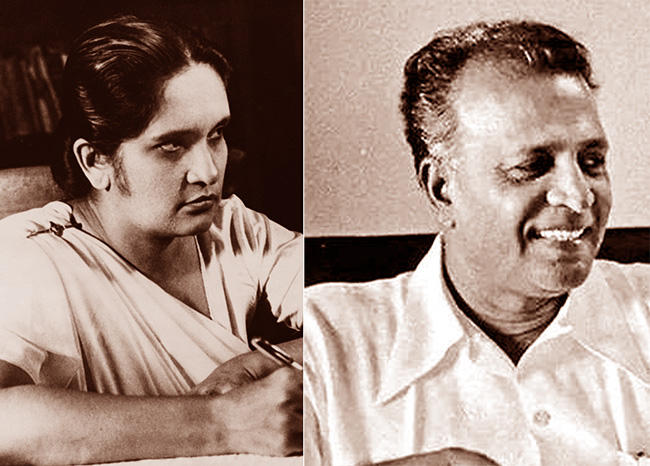
By Uditha Devapriya
On June 7, 1964, the Central Committee of the Lanka Sama Samaja Party convened a special conference at which three resolutions were presented. The first, moved by N. M. Perera, called for a coalition with the SLFP, inclusive of any ministerial portfolios. The second, led by the likes of Colvin R. de Silva, Leslie Goonewardena, and Bernard Soysa, advocated a line of critical support for the SLFP, but without entering into a coalition. The third, supported by the likes of Edmund Samarakkody and Bala Tampoe, rejected any form of compromise with the SLFP and argued that the LSSP should remain an independent party.
The conference was held a year after three parties – the LSSP, the Communist Party, and Philip Gunawardena’s Mahajana Eksath Peramuna – had founded a United Left Front. The ULF’s formation came in the wake of a spate of strikes against the Sirimavo Bandaranaike government. The previous year, the Ceylon Transport Board had waged a 17-day strike, and the harbour unions a 60-day strike. In 1963 a group of working-class organisations, calling itself the Joint Committee of Trade Unions, began mobilising itself. It soon came up with a common programme, and presented a list of 21 radical demands.
In response to these demands, Bandaranaike eventually supported a coalition arrangement with the left. In this she was opposed, not merely by the right-wing of her party, led by C. P. de Silva, but also those in left parties opposed to such an agreement, including Bala Tampoe and Edmund Samarakkody. Until then these parties had never seen the SLFP as a force to reckon with: Leslie Goonewardena, for instance, had characterised it as “a Centre Party with a programme of moderate reforms”, while Colvin R. de Silva had described it as “capitalist”, no different to the UNP and by default as bourgeois as the latter.
The LSSP’s decision to partner with the government had a great deal to do with its changing opinions about the SLFP. This, in turn, was influenced by developments abroad. In 1944, the Fourth International, which the LSSP had affiliated itself with in 1940 following its split with the Stalinist faction, appointed Michel Pablo as its International Secretary. After the end of the war, Pablo oversaw a shift in the Fourth International’s attitude to the Soviet states in Eastern Europe. More controversially, he began advocating a strategy of cooperation with mass organisations, regardless of their working-class or radical credentials.
Pablo argued that from an objective perspective, tensions between the US and the Soviet Union would lead to a “global civil war”, in which the Soviet Union would serve as a midwife for world socialist revolution. In such a situation the Fourth International would have to take sides. Here he advocated a strategy of entryism vis-à-vis Stalinist parties: since the conflict was between Stalinist and capitalist regimes, he reasoned, it made sense to see the former as allies. Such a strategy would, in his opinion, lead to “integration” into a mass movement, enabling the latter to rise to the level of a revolutionary movement.

Though controversial, Pablo’s line is best seen in the context of his times. The resurgence of capitalism after the war, and the boom in commodity prices, had a profound impact on the course of socialist politics in the Third World. The stunted nature of the bourgeoisie in these societies had forced left parties to look for alternatives. For a while, Trotsky had been their guide: in colonial and semi-colonial societies, he had noted, only the working class could be expected to see through a revolution. This entailed the establishment of workers’ states, but only those arising from a proletarian revolution: a proposition which, logically, excluded any compromise with non-radical “alternatives” to the bourgeoisie.
To be sure, the Pabloites did not waver in their support for workers’ states. However, they questioned whether such states could arise only from a proletarian revolution. For obvious reasons, their reasoning had great relevance for Trotskyite parties in the Third World. The LSSP’s response to them showed this well: while rejecting any alliance with Stalinist parties, the LSSP sympathised with the Pabloites’ advocacy of entryism, which involved a strategic orientation towards “reformist politics.” For the world’s oldest Trotskyite party, then going through a series of convulsions, ruptures, and splits, the prospect of entering the reformist path without abandoning its radical roots proved to be welcoming.
Writing in the left-wing journal Community in 1962, Hector Abhayavardhana noted some of the key concerns that the party had tried to resolve upon its formation. Abhayavardhana traced the LSSP’s origins to three developments: international communism, the freedom struggle in India, and local imperatives. The latter had dictated the LSSP’s manifesto in 1936, which included such demands as free school books and the use of Sinhala and Tamil in the law courts. Abhayavardhana suggested, correctly, that once these imperatives changed, so would the party’s focus, though within a revolutionary framework. These changes would be contingent on two important factors: the establishment of universal franchise in 1931, and the transfer of power to the local bourgeoisie in 1948.
Paradoxical as it may seem, the LSSP had entered the arena of radical politics through the ballot box. While leading the struggle outside parliament, it waged a struggle inside it also. This dual strategy collapsed when the colonial government proscribed the party and the D. S. Senanayake government disenfranchised plantation Tamils. Suffering two defeats in a row, the LSSP was forced to think of alternatives. That meant rethinking categories such as class, and grounding them in the concrete realities of the country.
This was more or less informed by the irrelevance of classical and orthodox Marxian analysis to the situation in Sri Lanka, specifically to its rural society: with a “vast amorphous mass of village inhabitants”, Abhayavardhana observed, there was no real basis in the country for a struggle “between rich owners and the rural poor.” To complicate matters further, reforms like the franchise and free education, which had aimed at the emancipation of the poor, had in fact driven them away from “revolutionary inclinations.” The result was the flowering of a powerful rural middle-class, which the LSSP, to its discomfort, found it could not mobilise as much as it had the urban workers and plantation Tamils.
Where else could the left turn to? The obvious answer was the rural peasantry. But the rural peasantry was in itself incapable of revolution, as Hector Abhayavardhana has noted only too clearly. While opposing the UNP’s Westernised veneer, it did not necessarily oppose the UNP’s overtures to Sinhalese nationalism. As historians like K. M. de Silva have observed, the leaders of the UNP did not see their Westernised ethos as an impediment to obtaining support from the rural masses. That, in part at least, was what motivated the Senanayake government to deprive Indian estate workers of their most fundamental rights, despite the existence of pro-minority legal safeguards in the Soulbury Constitution.
To say this is not to overlook the unique character of the Sri Lankan rural peasantry and petty bourgeoisie. Orthodox Marxists, not unjustifiably, characterise the latter as socially and politically conservative, tilting more often than not to the right. In Sri Lanka, this has frequently been the case: they voted for the UNP in 1948 and 1952, and voted en masse against the SLFP in 1977. Yet during these years they also tilted to the left, if not the centre-left: it was the petty bourgeoisie, after all, which rallied around the SLFP, and supported its more important reforms, such as the nationalisation of transport services.
One must, of course, be wary of pasting the radical tag on these measures and the classes that ostensibly stood for them. But if the Trotskyite critique of the bourgeoisie – that they were incapable of reform, even less revolution – holds valid, which it does, then the left in the former colonies of the Third World had no alternative but to look elsewhere and to be, as Abhayavardhana noted, “practical men” with regard to electoral politics. The limits within which they had to work in Sri Lanka meant that, in the face of changing dynamics, especially among the country’s middle-classes, they had to change their tactics too.
Meanwhile, in 1953, the Trotskyite critique of Pabloism culminated with the publication of an Open Letter by James Cannon, of the US Socialist Workers’ Party. Cannon criticised the Pabloite line, arguing that it advocated a policy of “complete submission.” The publication of the letter led to the withdrawal of the International Committee of the Fourth International from the International Secretariat. The latter, led by Pablo, continued to influence socialist parties in the Third World, advocating temporary alliances with petty bourgeois and centrist formations in the guise of opposing capitalist governments.
For the LSSP, this was a much-needed opening. Even as late as 1954, three years after S. W. R. D. Bandaranaike formed the SLFP, the LSSP continued to characterise the latter as the alternative bourgeois party in Ceylon. Yet this did not deter it from striking up no contest pacts with Bandaranaike at the 1956 election, a strategy that went back to November 1951, when the party requested the SLFP to hold a discussion about the possibility of eliminating contests in the following year’s elections. Though it extended critical support to the MEP government in 1956, the LSSP opposed the latter once it enacted emergency measures in 1957, mobilising trade union action for a period of three years.
At the 1960 election the LSSP contested separately, with the slogan “N. M. for P.M.” Though Sinhala nationalism no longer held sway as it had in 1956, the LSSP found itself reduced to a paltry 10 seats. It was against this backdrop that it began rethinking its strategy vis-à-vis the ruling party. At the throne speech in April 1960, Perera openly declared that his party would not stabilise the SLFP. But a month later, in May, he called a special conference, where he moved a resolution for a coalition with the party. As T. Perera has noted in his biography of Edmund Samarakkody, the response to the resolution unearthed two tendencies within the oppositionist camp: the “hardliners” who opposed any compromise with the SLFP, including Samarakkody, and the “waverers”, including Leslie Goonewardena.
These tendencies expressed themselves more clearly at the 1964 conference. While the first resolution by Perera called for a complete coalition, inclusive of Ministries, and the second rejected a coalition while extending critical support, the third rejected both tactics. The outcome of the conference showed which way these tendencies had blown since they first manifested four years earlier: Perera’s resolution obtained more than 500 votes, the second 75 votes, the third 25. What the anti-coalitionists saw as the “Great Betrayal” of the LSSP began here: in a volte-face from its earlier position, the LSSP now held the SLFP as a party of a radical petty bourgeoisie, capable of reform.
History has not been kind to the LSSP’s decision. From 1970 to 1977, a period of less than a decade, these strategies enabled it, as well as the Communist Party, to obtain a number of Ministries, as partners of a petty bourgeois establishment. This arrangement collapsed the moment the SLFP turned to the right and expelled the left from its ranks in 1975, in a move which culminated with the SLFP’s own dissolution two years later.
As the likes of Samarakkody and Meryl Fernando have noted, the SLFP needed the LSSP and Communist Party, rather than the other way around. In the face of mass protests and strikes in 1962, the SLFP had been on the verge of complete collapse. The anti-coalitionists in the LSSP, having established themselves as the LSSP-R, contended later on that the LSSP could have made use of this opportunity to topple the government.
Whether or not the LSSP could have done this, one can’t really tell. However, regardless of what the LSSP chose to do, it must be pointed out that these decades saw the formation of several regimes in the Third World which posed as alternatives to Stalinism and capitalism. Moreover, the LSSP’s decision enabled it to see through certain important reforms. These included Workers’ Councils. Critics of these measures can point out, as they have, that they could have been implemented by any other regime. But they weren’t. And therein lies the rub: for all its failings, and for a brief period at least, the LSSP-CP-SLFP coalition which won elections in 1970 saw through something of a revolution in the country.
The writer is an international relations analyst, researcher, and columnist based in Sri Lanka who can be reached at udakdev1@gmail.com
Sat Mag
50 years of legacy of Police Cadeting at Ananda
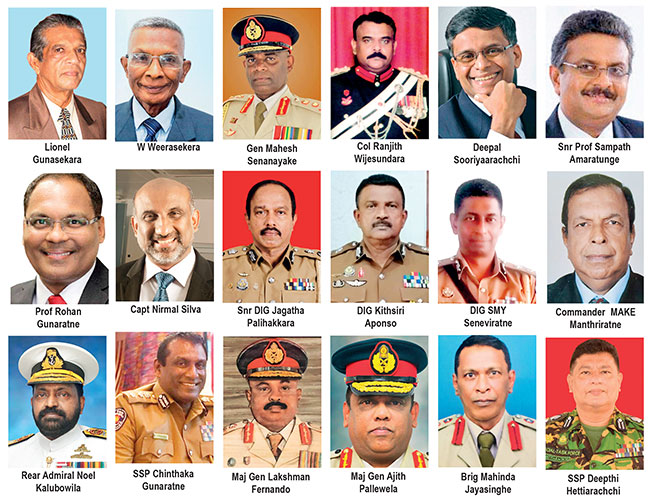
By Nilakshan Perera
Prime Minister Sirimavo Bandaranayake wanted to forge a cordial relationship with school children and the Police Department, after carefully studying a similar programme in Singapore and Malaysia. With the support of the then Ministry of Education and the Sri Lanka Police, the Sri Lanka Police Cadet Corps began as an attachment to the Sri Lankan Police Reserve. On 03 July 1972, six schools were selected for the pilot programme; namely Kingswood College Kandy, Mahinda College Galle, Hindu College Jaffna, Ananda College Colombo, Zahira College Gampola and Sangabodhi Vidyalaya Nittambuwa. By 1978, this number rose to 32 Boys’ schools and 19 Girls’ schools.
Each of these individual platoons consisted of 33 cadets. The masters who were in charge of these platoons were considered part of the Police Reserve. They were assigned with the rank of an Inspector (IP) or a Sub Inspector (SI).
Cadet Corps held a selection for the camps. They would participate in annual competitions for squad drills, physical training, first-aid, drama, billet inspection, general knowledge and public relations, best commander, sports and IGP’s Challenge Shield. From these selection camps, the first three winners would be called for the final camp, from which the Island winner was then selected.
When Ananda College was selected for Police Cadetting on 03 July 1972, two of the school’s teachers were appointed as the Officers In-charge of the College Cadet Platoon. They were Mr Lionel Gunasekera and Mr Ariyapala. Later on, Mr W Weerasekera took over from Mr Ariyapala. Both Mr Gunasekera and Mr Weerasekera extended their invaluable and unwavering services for the Cadet Platoon’s success story. Both these gentlemen were there to supervise and train cadets. One could not forget Mr Weerasekera’s 9 Sri 7321 orange coloured Bajaj scooter parked next to the College main canteen. Another teacher, who trained cadets for drama competitions, voluntarily, was the late Mr Lionel Ranwala. He was the talented master who helped cadets to secure wins in the drama competition, year after year, at the annual camps.
The evening before attending the camp, a special “Mal Pooja” was organised to bless the platoon. After this, they would meet the principal, at his office, for another special blessing and a tea party, hosted by the principal himself. The then Principal of Ananda College, Colonel GW Rajapakse, gave his fullest blessings to the Police Cadets. These recognised cadets earned more responsibilities and assumed various leadership roles at the College. Prefects, Deputy Head Prefect, Head Prefect, Big Match Tent Secretaries, and Presidents of various societies were given to Cadets uncontestedly.
The Cadets stayed at the hostel, the night before leaving for camp. Our trunks were loaded into the college van and unloaded at Maradana Railway station. The most valuable trunk in the Cadet’s eyes was the PLATOON BOX. This was so since the box often contained items such as butter cakes, bottles ofcordial, sweets, such as marshmallows, chocolate rolls, and biscuits. This precious box was kept under lock and key and the watchful eyes of two Cadet Corporals.
SSP Prof Nandadasa Kodagoda, SSP P V W de Silva and a few other senior officers from Police HQ often attended as judges for different categories in the annual camp competitions, such as first aid, general knowledge, squad drill and physical training. Both these senior officers would discharge their duties to the rule and spirit.
All first-aid requirements were provided by the college St John’s Ambulance Brigade for all college special events, such as big matches and sports meets. This unit was led by 1979 Corporal Devapriya Perera (IT Professional – London) and most of the first-aiders were Police Cadets. They volunteered their services to the General Hospital Accident Ward and the Sri Pada pilgrims. It was pleasing to see Cadets controlling traffic duties in front of the college, at the Maradana – Borella main road, every morning, from 7.00 am to 7.25 am and helping with traffic duties and car park duties during the college sports meet and other functions.
Police Cadets CR Senanayake (Automobile Engineer-Brisbane), Ravi Mahendra (IT professional), and the late Dharmapriya Silva, established a swimming club that held its training at Otters Swimming Club. The School Bus Travelers Society, organized by the Police Cadets, issued bus seasons tickets for students with the help of CTB officials.
Back then when a teacher had not reported to a class, senior Police Cadets would step in and take turns to teach these classes. Deepal Sooriyaarchchi (Former MD of Aviva, Management Consultant) and Sarath Katangoda (Management Consultant – UK) were the most popular student masters in that era with their popular stories and innovative methods of teaching. This increased the popularity of police cadets among the other students. The way cadets conducted themselves had a very high impact on fellow Anandians, and the number of students attending practices rose rapidly.
On several occasions, Anula Vidyalaya Police Cadets called our Cadets to assist with their training in preparation for their Annual Camps. Having borrowed bus season tickets from students coming to College, via Nugegoda, our senior cadets were looking forward to visiting Anula to train them during school hours. This friendly culture blossoms during camps as well as outside the two schools. We still continue our friendships with Kamal Hathamuney (who joined the Army and retired with the rank of Major, residing in Sweden), Nirmala Perera, Malraji Meepegama (married to Maj Gen Sunil Wanniarachchi), Rosy Ranasekera (married to former Ananda Cadet Band leader Maj Gen Dhananjith Karunaratne) Dilani Balasuriya, (former IGP late Mahinda Balasuriya’s sister – married to Dr Priyanga de Zoysa). Interestingly our Cadet Lanka Herath continued this relationship and found his lifetime partner Ganga Thilakaratne from the Anula Vidyalaya Platoon. A famous school from Kelaniya, St Paul’s Balika Vidyalaya, too, started Police Cadeting in 1980. The writer being 1981 Ananda Sgt found his partner from St Paul’s Balika Cadet Sgt of the same year, Rasadari Jayamaha. Former Dean of the faculty of Law, University of Colombo Prof Indira Nanayakkara and Shiromi Perera (Melbourne) were the Corporals of the same platoon.
In 1972, the College platoon, led by Sgt Ranjith Wijesundara, became the Island’s best platoon. On the 23rd of July, 1983, the Sri Lankan Army’s routine patrol was assigned from Madagal to Gurunagar with the call sign of Four Four Bravo, commanded by 2/Lt A.P.N.C de Waas Gunwardane with 15 soldiers attached to Charlie company of SLLI were ambushed at Thirunelveli in Jaffna. 2/Lt Waas Gunawrdane and 12 soldiers made the supreme sacrifice. Adjutant and Intelligence Officer of SLLI Capt Ranjith Wijesundara was assigned the task of identifying the fallen heroes. Lt Wass Gunawardane was a Cadet of the 1977 platoon. Ranjith Wijesundra is now retired with the rank of Colonel.
In 1975 the College platoon, led by Sgt M A K E Manthriratne, also became the country’s best platoon and he was selected by the National Youth Council to represent the Sri Lanka Police Cadet Corps to travel to Canada under the Youth Exchange Programme between Sri Lanka and Canada. Manthriratne later joined the SL Navy and retired with the rank of Commander. Presently, as the President of Past Cadets, together with the ever-reliable 1982 Sgt V S Makolage carrying out various welfare projects under the banner of the Past Police Cadet Wing of Ananda.
Ananda held an unbroken record of winning nine out of 10 Trophies in 1978, under the great leadership of Sergeant Kithsiri Aponso who undoubtedly took Ananda Police Cadets to greater heights, was a leader with great charisma, integrity and leadership qualities. He became the Deputy Head Prefect and joined the STF. He later moved to the Police dept and is presently appointed as the DIG In Charge of the Badulla region.
The highest rank Cadet could achieve is Sgt Major. There were three Sgt Majors who brought honour and recognition to Ananda, namely Piyal Jayatilake in 1977, Jagathpriya Karunaratne in 1978 and ‘79, and Kithsiri Aponso in 1980. Chinthaka Gunaratne, a Cadet of 1981, also became the athletic Captain in 1983 (presently SSP In Charge of Highways) brought great honour and recognition as he became the Director in Charge of the Sri Lanka Police Cadet Corps.
College Athletic Captain of 1977, Ranasinghe Dharmadasa (Snr Manager BOI), 1978 JPPP Silva (Consultant-USA), 1980 Damitha Vitharana, (joined Sri Lanka Navy and retired as Lt. Commander and was the Director at Lankem Ceylon PLC before migrating to the UK), 1981 Jagath Palihakkara, (joined Sri Lanka Police as a SI in 1982 and at presently acting Senior DIG Western Region). DIG S M Y Senviratne another past Cadet joined the Police and is presently DIG in Charge of the Ampara Region. They also brought pride and joy to their alma mater during their time in their respective platoons and in their subsequent endeavours.
Two Sgts who led the Island’s best Platoons in 1983 Priyantha Ratnayake (Planter) and Pasindu Hearath of 2016 (Undergraduate of Kyoto University, Japan) became Head Prefects and Pasindu was awarded the Fritz Kunz Memorial Trophy for the Most Outstanding Student of 2017. The 4th of July 2017 was a great day for Ananda, as well as for the Police Cadets. 1980 Cadet Sgt who led the Island’s Best Platoon became Commander of the Army. It was a great honour for Cadets. Past Cadets organized a felicitation for Gen Mahesh Senanayake to recognise his prestigious appointment.
With profound gratitude, we remember past Cadets Rear Admiral Noel Kalubowila (a highly rated naval officer decorated with the highest gallantry medals especially having led the “Suicide Express” in 1990 evacuating troops from Jaffna Fort, Major General Lakshan Fernando, Major General Ajith Pallewela, Brig Mahinda Jayasinghe, Maj Aruna Vithanage, Maj Sampath Karuanthilake, Major SP Rodrigo, Lt Bandual Withanachchi, Director Prisons TI Uduwera, SSP Deepthi Hettiarchchi of STF (Zonal Commander Jaffna Mannar, Killinochchi and Mullaithivu), SSP Amal Edirimanne (In Charge of Colombo North) were Cadets who joined the forces, Police and Prison departments, respectively.
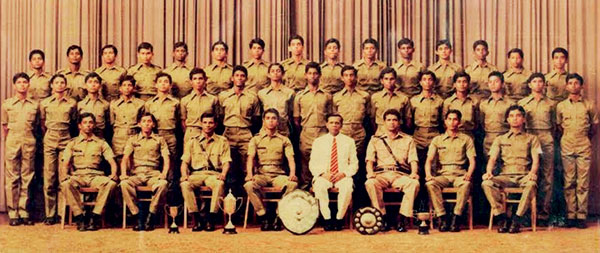
Chairman of University Grant Commission Senior Prof Sampath Amaratunge, one of the brilliant academics and a past Cadet, always believed and mentioned that “I am where I am because of my alma mater, and shall forever grateful to my journey”. Other note-worthy past Cadets are Harbor Master Capt Nirmal Silva, Prof Rohan Gunaratna (a political analyst specializing in international terrorism) present President of Ananda OBA, Bimal Wijesinghe who excelled in athletics during annual camps.
When this writer contacted one of our Masters-In-Charge, Mr W Weerasekera, he recalled those golden days. “As a pilot school where Police Cadet platoons were formed, Ananda College played its role in achieving the aims of cadetting as envisaged in the curriculum. It gives me great satisfaction to note the leadership and achievements of the Cadets, their success in later life with the highest contribution to the society at large”
Thanks for the untiring efforts of Hiranya Hewanayake (Senior Manager – Singer Sri Lanka) and Wing Commander Pradeep Kannangara Retd (Former Officer Commanding of the Special Air Borne Unit of Sri Lanka Air Force – Director – General Manager Abans Securitas), all past Cadets who reside all over the world are now well connected, via social media.We cherish the remarkable legacy of Ananda Police Cadetting.
-

 Business5 days ago
Business5 days agoCEAT Kelani launches three new radial tyre variants in ‘Orion Brawo’ range
-

 Business4 days ago
Business4 days agoCeyline Travels and MBA Alumni Association of University of Colombo sign MOU
-

 Business5 days ago
Business5 days agoHayleys Fabric celebrates triple triumph at ISPO Textrends Spring/Summer 2026
-

 Business6 days ago
Business6 days agoUrgent appeal from Sri Lankan exporters on rupee appreciation
-

 Business4 days ago
Business4 days agoMaldivian to launch direct flights to Colombo
-

 Business2 days ago
Business2 days agoTelin and Dialog Axiata ink strategic partnership to manage international voice and SMS termination
-

 Sports5 days ago
Sports5 days agoHello Madras, ‘ai api kaluda?’
-

 News3 days ago
News3 days agoSJB demands to know who occupied rooms 616 and 623 while Zahran was on 6th floor
















